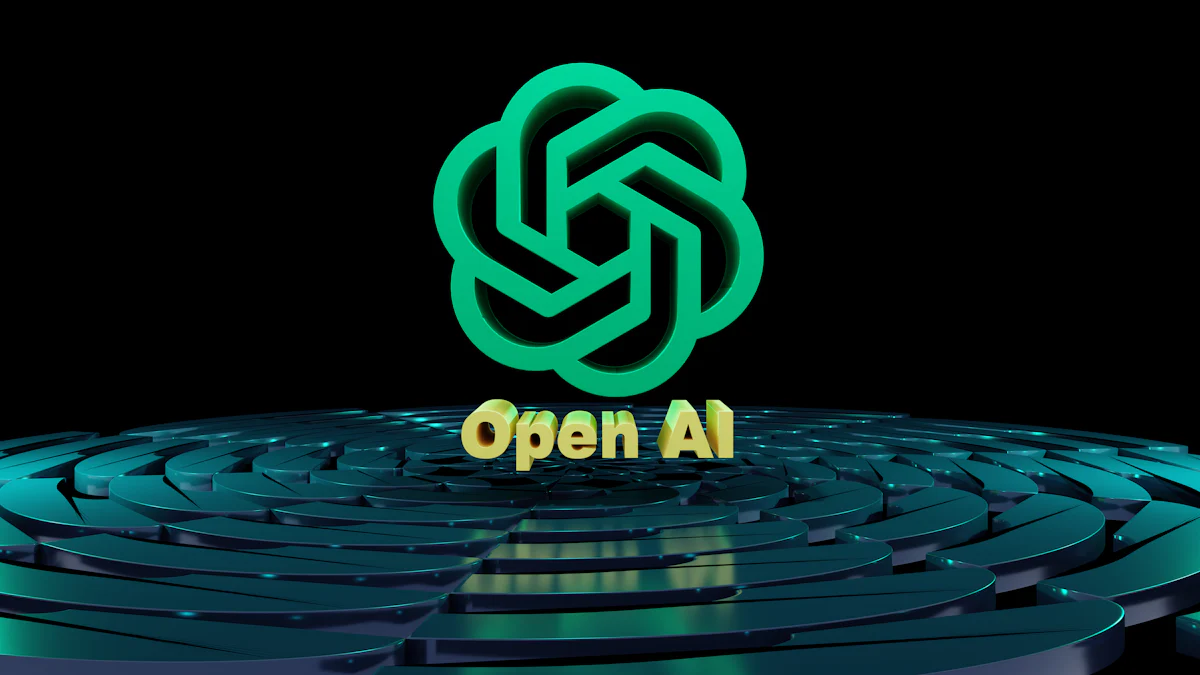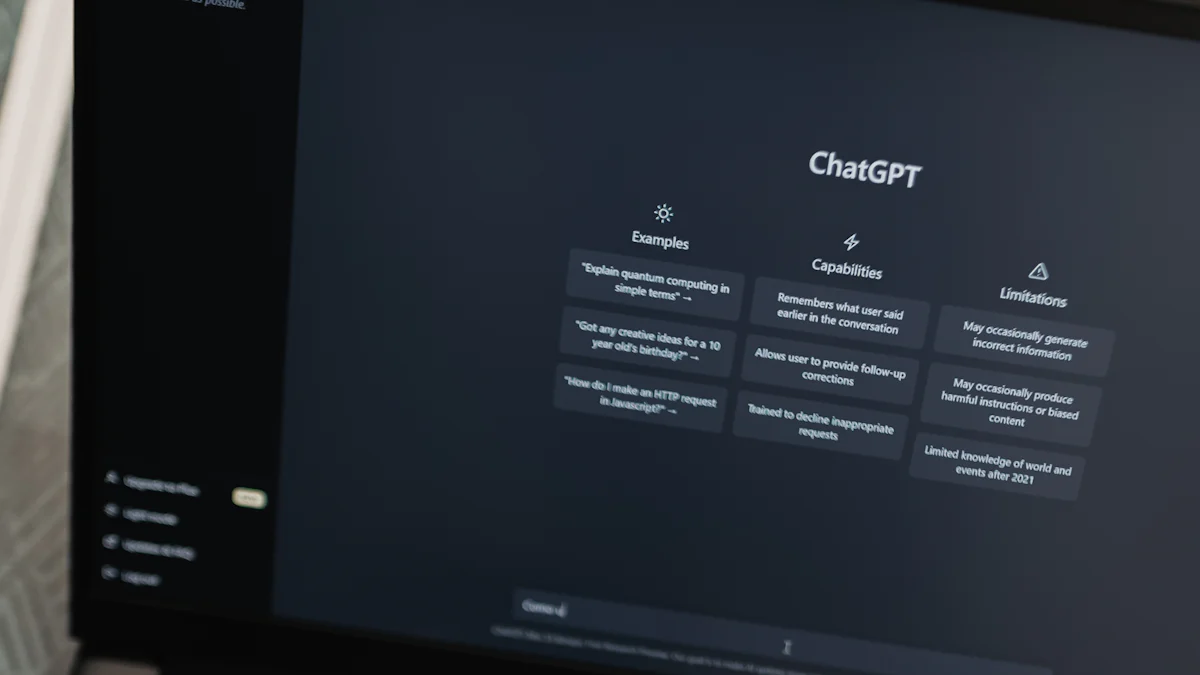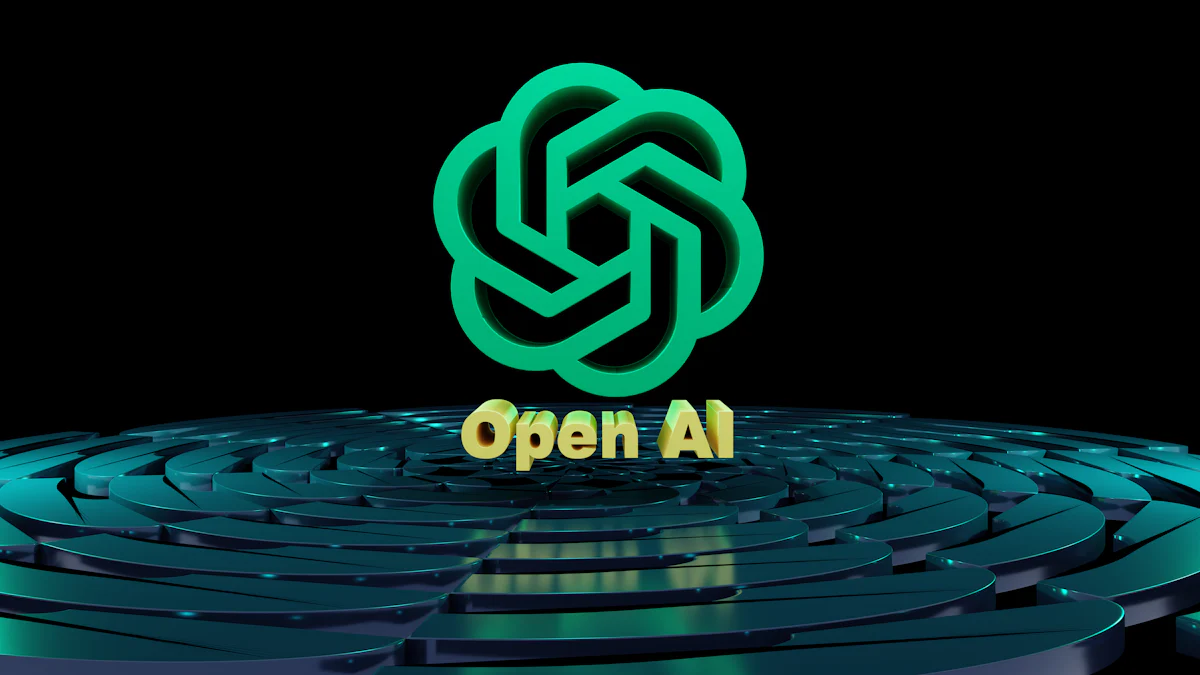The Evolution of Generative AI Models: From GPT-1 to GPT-4

Generative AI Models have transformed the landscape of artificial intelligence. These models create new content by learning patterns from existing data. Understanding their evolution is crucial as they continue to shape industries and technologies. The GPT series, a prominent example, showcases this progression. Each iteration has brought significant advancements, enhancing capabilities and performance. The global market for Generative AI is rapidly expanding, driven by digital adoption and consumer trends. By 2032, it is expected to impact 10% of total IT hardware, software services, ad spending, and gaming market spending, highlighting its growing importance.
Introduction to Generative AI Models
Definition and Purpose
What is Generative AI?
Generative AI models represent a groundbreaking advancement in artificial intelligence. These models create new content by learning patterns from existing data. They utilize complex algorithms to process and represent content, transforming raw characters into meaningful sentences and visual elements. Neural networks, such as Generative Adversarial Networks (GANs) and variational autoencoders, play a crucial role in generating realistic content. Recent progress in transformers has enabled the generation of text, images, and even proteins. This capability allows Generative AI models to produce outputs that closely mimic human creativity and intelligence.
Key Objectives and Applications
Generative AI models aim to enhance creativity and efficiency across various domains. Their primary objectives include generating realistic content, improving natural language processing, and enabling sophisticated simulations. These models find applications in numerous fields:
Content Creation: They assist in writing articles, creating art, and composing music.
Predictive Analytics: By analyzing vast amounts of data, they identify patterns and relationships invisible to the human eye, allowing for accurate predictions of future trends and market shifts.
Simulation and Modeling: Businesses use these models to explore 'what if' scenarios, modeling outcomes based on different assumptions before committing resources.
Historical Context
Early Developments in AI
Artificial intelligence has a rich history, dating back to the mid-20th century. Early AI focused on rule-based systems and symbolic reasoning. Researchers aimed to create machines that could mimic human thought processes. However, these early models faced limitations in handling complex tasks and understanding context.
Transition to Generative Models
The transition to generative models marked a significant shift in AI research. As technology advanced, researchers began exploring models that could generate new content rather than merely processing existing information. This shift led to the development of neural networks capable of learning from vast datasets. The introduction of Generative AI models revolutionized the field, enabling machines to create content that closely resembles human output. This evolution has paved the way for the sophisticated models we see today, such as the GPT series.
GPT-1: The Beginning

Technical Specifications
Model Architecture
GPT-1 marked the inception of the Generative AI Models series. It utilized a twelve-layer decoder-only transformer architecture. This design incorporated twelve masked self-attention heads, each with 64-dimensional states, culminating in a total of 768 dimensions. The model comprised approximately 117 million parameters. Such a structure enabled GPT-1 to process and generate text by understanding the context of the input. The Adam optimization algorithm played a crucial role in its training, with a learning rate that increased linearly from zero over the initial 2,000 updates to a peak of 2.5×10−4, before gradually decreasing to zero using a cosine schedule.
Training Data and Process
GPT-1's training involved a substantial dataset of 40GB, encompassing around 600 billion words sourced from the internet. The model underwent pre-training on this diverse dataset, which allowed it to grasp a wide array of linguistic patterns. Subsequently, fine-tuning was employed for specific tasks, enhancing its versatility. This dual-phase training process enabled GPT-1 to generate coherent text, although it excelled primarily with shorter sentences or small extracts.
Innovations and Limitations
Key Innovations
GPT-1 introduced several groundbreaking features in the realm of Generative AI Models. Its ability to generate coherent text by understanding context marked a significant advancement. The model's pre-training and fine-tuning approach set a new standard for versatility in AI models. By leveraging a vast dataset, GPT-1 demonstrated the potential of transformer architectures in natural language processing.
Recognized Limitations
Despite its innovations, GPT-1 had notable limitations. The model struggled with comprehending long pieces of text, often faltering when tasked with generating responses to extended inputs. Its performance, while impressive for its time, did not match the capabilities of its successors. The model's reliance on shorter text inputs highlighted the need for further advancements in handling complex language tasks.
GPT-2: A Leap Forward
Enhanced Capabilities
Improvements Over GPT-1
GPT-2 marked a significant advancement in the realm of Generative AI Models. It expanded upon its predecessor, GPT-1, by increasing the number of parameters from 117 million to 1.5 billion. This expansion allowed GPT-2 to generate text that was more coherent and contextually relevant. The model's ability to handle input twice the size of GPT-1 enabled it to produce longer and more complex responses. Researchers trained GPT-2 on a larger corpus of textual data, which enhanced its understanding of diverse linguistic patterns. This improvement in model architecture and training data resulted in a more robust and versatile AI model.
New Applications
The enhanced capabilities of GPT-2 opened up new applications across various fields. In content creation, GPT-2 demonstrated its ability to generate articles, stories, and poetry with remarkable fluency. Businesses leveraged its predictive analytics capabilities to forecast trends and make data-driven decisions. Additionally, GPT-2 found applications in customer service, where it provided automated responses to customer inquiries. Its ability to generate human-like text made it a valuable tool for chatbots and virtual assistants. The model's versatility and improved performance expanded the possibilities for Generative AI Models in real-world applications.
Ethical Considerations
Concerns Raised
The release of GPT-2 raised several ethical concerns. One major issue was the potential misuse of the model for creating fake news or misleading content. The ability of GPT-2 to generate realistic text posed a risk of spreading misinformation. Additionally, privacy concerns emerged as the model could inadvertently leak details from its training data. These concerns highlighted the need for responsible use and regulation of Generative AI Models to prevent potential harm.
OpenAI's Response
In response to these ethical concerns, OpenAI took proactive measures to address the potential risks associated with GPT-2. Initially, they withheld the full release of the model to prevent misuse. OpenAI also engaged with the research community and policymakers to discuss the implications of Generative AI Models. They emphasized the importance of developing guidelines and best practices for the responsible use of AI technology. By fostering collaboration and transparency, OpenAI aimed to mitigate the risks while maximizing the benefits of GPT-2's advancements.
GPT-3: Scaling Up
Technical Advancements
Model Size and Complexity
GPT-3 represents a significant leap in the evolution of Generative AI Models. It boasts an impressive 175 billion parameters, dwarfing its predecessor, GPT-2, which had 1.5 billion. This increase in model size allows GPT-3 to handle a broader range of topics and tasks with greater accuracy. The complexity of GPT-3's architecture enables it to generate more nuanced and contextually appropriate responses. Its ability to process vast amounts of data contributes to its superior performance in language tasks.
Training Techniques
The training techniques employed for GPT-3 further enhance its capabilities. Researchers utilized a diverse dataset, encompassing a wide variety of topics, to train the model. This approach ensures that GPT-3 can understand and generate text across different domains. The model's training process involved fine-tuning on specific tasks, allowing it to excel in areas such as question answering, text summarization, and language translation. These advancements in training techniques contribute to GPT-3's robustness and versatility.
Impact and Reception
Industry Adoption
The introduction of GPT-3 has had a profound impact on various industries. Businesses have adopted GPT-3 for tasks such as content creation, customer service, and data analysis. Its ability to generate human-like text makes it a valuable tool for automating processes and enhancing productivity. Companies leverage GPT-3's capabilities to improve customer interactions and streamline operations. The widespread adoption of GPT-3 highlights its significance in the realm of Generative AI Models.
Public Perception
Public perception of GPT-3 has been largely positive, with many recognizing its potential to revolutionize the field of artificial intelligence. Users appreciate its ability to generate coherent and contextually relevant text. However, some concerns persist regarding the ethical implications of such powerful AI models. The potential for misuse, such as generating misleading content, remains a topic of discussion. Despite these concerns, GPT-3 continues to be celebrated for its advancements and contributions to AI research.
GPT-4: The Latest Frontier

Breakthrough Features
New Capabilities
GPT-4, introduced in 2023, represents a significant milestone in the evolution of Generative AI Models. This model builds upon the strengths of its predecessors, particularly GPT-3, by refining and enhancing its capabilities. GPT-4 introduces multimodal capabilities, allowing it to process both text and image inputs. This advancement enables the model to excel in complex reasoning tasks and provides a more comprehensive understanding of context. The integration of these features marks a substantial leap forward in AI-driven natural language processing.
Performance Metrics
The performance metrics of GPT-4 demonstrate its superiority over previous models. It exhibits enhanced understanding of context, improved factual accuracy, and better handling of nuanced queries. These improvements result from the model's ability to process vast amounts of data and generate more coherent and contextually relevant responses. GPT-4's performance metrics highlight its potential to revolutionize various industries by providing more accurate and efficient solutions to complex problems.
Challenges and Opportunities
Addressing Previous Limitations
GPT-4 addresses several limitations observed in earlier models. It improves upon the contextual understanding and coherence issues that plagued its predecessors. By leveraging advanced training techniques and a larger dataset, GPT-4 enhances its ability to generate human-like text. These advancements address the challenges faced by previous Generative AI Models, paving the way for more sophisticated applications.
Future Potential
The future potential of GPT-4 lies in its ability to transform industries and redefine the boundaries of AI capabilities. Its multimodal capabilities open up new possibilities for applications in fields such as healthcare, education, and entertainment. As AI continues to evolve, GPT-4 serves as a foundation for future innovations, driving the development of more advanced Generative AI Models. The ongoing research and development in this area promise to unlock new opportunities and address the ethical considerations associated with AI deployment.
Comparative Analysis of Generative AI Models
Evolution of Capabilities
From GPT-1 to GPT-4
The journey from GPT-1 to GPT-4 illustrates a remarkable evolution in the capabilities of Generative AI Models. GPT-1 laid the foundation with its ability to generate coherent text by understanding context. However, it struggled with longer texts and complex language tasks. GPT-4, on the other hand, vastly increased its aptitudes compared to GPT-1. It focused on improving accuracy, efficiency, and contextual understanding. This progression highlights the significant advancements in model architecture and training techniques over time.
Key Milestones
Several key milestones mark the evolution of these models:
GPT-1: Introduced the concept of transformer-based language models, setting a new standard for natural language processing.
GPT-2: Expanded the model's parameters, enhancing its ability to generate more coherent and contextually relevant text.
GPT-3: Scaled up the model size significantly, allowing it to handle a broader range of topics and tasks with greater accuracy.
GPT-4: Introduced multimodal capabilities, enabling the model to process both text and image inputs, and excel in complex reasoning tasks.
These milestones demonstrate the continuous improvement and refinement of Generative AI Models, paving the way for more sophisticated applications.
Impact on AI Research
Influence on Other Models
The evolution of Generative AI Models has had a profound influence on the development of other AI models. Researchers have drawn inspiration from the advancements in the GPT series to enhance their own models. The success of transformer architectures in the GPT series has led to their widespread adoption in various AI applications. This influence extends beyond natural language processing, impacting fields such as computer vision and speech recognition.
Contributions to the Field
Generative AI Models have made significant contributions to the field of artificial intelligence. They have advanced the understanding of language modeling and demonstrated the potential of AI to generate human-like text. These models have also highlighted the importance of large-scale datasets and sophisticated training techniques in achieving superior performance. By pushing the boundaries of what AI can achieve, Generative AI Models have opened up new possibilities for research and innovation.
Future Directions in Generative AI Models
Anticipated Developments
Next Steps in AI Evolution
Generative AI Models continue to evolve, promising exciting advancements. Researchers aim to enhance model efficiency and improve understanding of nuanced contexts. These improvements will enable AI to generate more accurate and contextually relevant content. The focus will also shift towards reducing computational resources, making these models more accessible and sustainable. As AI technology advances, the integration of multimodal capabilities will become more prevalent, allowing models to process diverse inputs like text, images, and audio seamlessly.
Potential Innovations
The future holds immense potential for innovations in Generative AI Models. One area of exploration is the development of models that can generate content with a deeper understanding of human emotions and intentions. This advancement could revolutionize fields such as mental health support and personalized education. Additionally, researchers are investigating ways to create AI systems that can collaborate with humans, enhancing creativity and problem-solving capabilities. These innovations will pave the way for more sophisticated applications across various industries.
Ethical and Societal Implications
Responsible AI Development
The rapid advancement of Generative AI Models raises important ethical considerations. Companies leading this revolution bear a significant responsibility to ensure ethical stewardship. The potential to generate harmful or misleading information, fake imagery, or realistic audio content poses risks to society. Responsible deployment of these models is crucial to mitigate these risks. Developers must prioritize transparency, accountability, and fairness in AI systems to prevent misuse and protect individuals and organizations.
"Generative AI's capacity to produce content that blurs the lines between reality and fabrication is alarming."
Societal Impact
Generative AI Models have the potential to impact society in profound ways. They can influence public perception, fuel propaganda, and exacerbate global disparities. The technology may introduce new business risks, such as misinformation, plagiarism, and copyright infringements. To address these challenges, collaboration among stakeholders is essential. By fostering dialogue and cooperation, society can harness the benefits of Generative AI while minimizing its negative consequences. The goal is to create AI that truly does more good than harm, ensuring a hopeful future for all.
Conclusion
Summary of Key Points
Recap of Evolution
The journey from GPT-1 to GPT-4 illustrates a remarkable evolution in Generative AI Models. Each iteration has pushed the boundaries of what is possible in language understanding and generation. GPT-1 laid the groundwork with its ability to generate coherent text by understanding context. GPT-2 expanded on this by increasing the number of parameters, allowing for more coherent and contextually relevant text. GPT-3 took a significant leap with 175 billion parameters, enabling it to handle a broader range of topics and tasks. Finally, GPT-4 introduced multimodal capabilities, processing both text and image inputs, and excelling in complex reasoning tasks.
Significance of Advancements
The advancements in Generative AI Models have had a profound impact on various industries. These models have revolutionized natural language processing, enabling applications in content creation, customer service, and data analysis. The ability to generate human-like text has made these models valuable tools for automating processes and enhancing productivity. The introduction of multimodal capabilities in GPT-4 has opened up new possibilities for applications in fields such as healthcare, education, and entertainment. These advancements highlight the growing importance of Generative AI Models in shaping the future of technology.
Final Thoughts
The Future of Generative AI
The future of Generative AI Models holds immense potential for innovation and transformation. Researchers continue to explore ways to enhance model efficiency and improve understanding of nuanced contexts. The integration of multimodal capabilities will become more prevalent, allowing models to process diverse inputs like text, images, and audio seamlessly. These advancements will enable AI to generate more accurate and contextually relevant content, paving the way for more sophisticated applications across various industries.
Call to Action for Researchers
Researchers play a crucial role in the ongoing development of Generative AI Models. They must prioritize transparency, accountability, and fairness in AI systems to prevent misuse and protect individuals and organizations. Collaboration among stakeholders is essential to harness the benefits of Generative AI while minimizing its negative consequences. By fostering dialogue and cooperation, researchers can ensure that AI technology truly does more good than harm, creating a hopeful future for all.
The evolution from GPT-1 to GPT-4 showcases remarkable advancements in Generative AI Models. Each version has pushed the boundaries of language understanding and generation. GPT-1 laid the groundwork, while GPT-4 introduced multimodal capabilities, processing both text and image inputs. These advancements have revolutionized industries, enabling applications in content creation and automation. Experts predict that by the decade's end, models will approach human-level performance in specific tasks. As Generative AI continues to evolve, it holds the potential to transform work processes beyond initial expectations, emphasizing the need for responsible development.
See Also
Deciphering the Operations of GPT-4
Exploring the Educational Journey of Generative AI Models
The Evolution of Generative AI: Idea to Actualization
